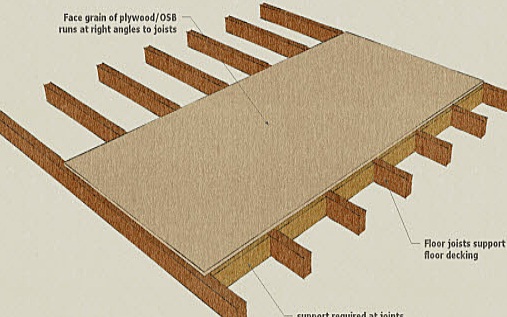A floor joist is a horizontal structural member that typically extends into the open space between the beams to transfer loads to vertical structural members. As part of the floor system, these beams support the weight of everything in the room, including walls, furniture, appliances, and even people.

This type of flooring uses high-quality wood to give the floor durability, uniformity, and strength. These beams must be intrinsically closely positioned and secured so that they can sufficiently withstand all loads, including dynamic, static, impact, floor sag, and bending protection.
The floor joist can be covered by plywood or some other sheeting material to give final finishing.

Table of Contents
Types of Floor Joists
- I Shaped Floor Joist:
- Solid Lumber Joist
- Open- Web Floor Trusses Joist
I Shaped Floor Joist:
I Shaped floor beams are engineered wood beams. Different parts of the beam are made of different materials. For example, the top and bottom of the beam are made of laminated veneer or wood, and the central part is made of oriented strand board (OSB) or plywood.

Solid Lumber Joist
Solid Lumber Joists are usually closed planks made from old wood. The range is affected by various factors such as board type, board size, distance, and offset.
Solid Lumber Joists in hardwood work areas are still common, but timber supplies are scarce and the use of young lumber for beams can damage the timber.

Open- Web Floor Trusses Joist
These beams offer many advantages over other types of beams such as depth range, longer span, and load capacity. Open Web floor truss joists have a low moisture content and low shrinkage.

